Culture Connections
Attending to the National Soul
This volume continues the story begun with The Fountain of Public Prosperity: Evangelical Christians in Australian History 1740–1914 in 2018. This two-volume blockbuster is the consummation of 35 years of research and writing by the authors as well as incorporating work by many other scholars who are acknowledged within. 
As Stuart Piggin quipped at the launch on 12 Dec 2019 at St Stephen’s Uniting Church Macquarie Street, this volume is vasta mole superbus (“proud in its prodigious bulk,” as Dr Johnson said of his Dictionary) at 656 pages. Again, thankfully, the footnotes are at the foot of the page, there is a bibliography of forty pages and a two-column index of 47 pages. It is also a very attractive volume and a credit to authors and publisher. The jacket illustration is even more evocative than the Parramatta Memorial Drinking Fountain on the volume 1 cover. There are many arresting phrases (e.g., Anglican proponents of the ordination of women had something in common with Lindy Chamberlain, they were both “condemned hysterically, unreasonably and with allusion to witches”). This reviewer said of volume 1 that this is “an epic achievement which deserves to reorient Australian history-writing in several important respects”. Volume 2 confirms his opinion.
Volume 1 was set up by a stunning Prologue, a tour de force concerning first fleet naval officer and astronomer, William Dawes and his relations with the Aborigines. The Prologue to this volume did not disappoint, featuring Mary Bennett (1881-1961), missionary and a determined advocate of Aboriginal rights. Both prologues set the scene for a work which throughout takes seriously relations between Aborigines and later settlers and gives a continuing and balanced account of the importance of Christianity to the Indigenous peoples.
Volume 1 ends with evangelicals helping in “creating one of the most ‘Christianised’ nations on earth in terms of values” (p. 39). The introduction to volume 2 reiterates this but goes further in asserting that Australia is “still one of the most ‘Christianised’ of nations”. (p. 15). The themes of the book are, first, how evangelicals worked out how to be dual citizens of the Kingdom of Heaven and of the Commonwealth of Australia, secondly, how evangelicals manifested their aptitude for desecularisation in a rapidly secularising world, and thirdly, how evangelicals have sensitised the Australian conscience and informed the Australian consciousness (i.e., “the National Soul” of the title).
The structure of the book works well. Part A, “Faith under Fire” has two chapters on WW1, three on the 1920s and depression, and two on WW2. Part A is underpinned by Bob Linder’s splendid research. Part B, “Faith and the Secular Challenge” has three chapters on 1946-65 and two of each of 1965-79, the 1980s, the 1990s and the 21st century. This means that some chapters deal with issues internal to evangelicals and their denominations (such as theological and political conflict) and some with their attempts to influence the broader society (such evangelism, social work and political influence).
The authors obviously accept the truism that you can’t say everything, so generalise quite a lot but took Paul Hasluck’s advice and sank “shafts” to achieve depth. Their two shafts were the evangelical experience of war (Linder’s métier) and Sydney evangelical Anglicans (for whom Piggin is something of a bête noir). The account of the charismatic and Pentecostal movement within evangelicalism from the 1960s comes to form almost a third shaft.
Other sorts of evangelicals are treated much more selectively and episodically, especially in Part B, where Sydney Anglicans shape the whole narrative, for good or ill. With the Baptists, we get perspectives from WA, Victoria and NSW in different time periods, with little lateral connection. Well, maybe it’s their polity that’s the problem. The Congregationalists appear from time to time, but their swing from solidly evangelical to predominantly liberal from the 1880s to 1920s is left unexamined (despite a helpful article on the subject by Geoff Barnes in Church Heritage in March 1997). The Methodists get better treatment, especially those in NSW and SA. The Lutherans feature little at all. There is nothing on the Brethren in northern Tasmania. The Presbyterians also appear in a fragmented way, but feature strongly in sections about doctrinal dispute (e.g. Samuel Angus) and the ordination of women. A personal beef is the continued ignoring of Scottish evangelical entrepreneur Andrew Stewart who recruited about 90 evangelical home missionaries and ministers for the Presbyterian Church of Queensland from 1900 to 1938. His recruit George Tulloch features, but not Hugh Paton. Actually, Queensland is somewhat neglected in general. (Even WA does better.) However, Stewart’s son-in-law Alfred Coombe is featured, but then he was active in Victoria.
A number of individuals come in for special treatment, or are used to illuminate the themes, not all of them evangelicals. R.M. Williams is a surprise: he is used as a lens through which to observe the outback. (Some might consider Bert Facey for a similar but urban purpose.) Robert Menzies, John Curtin and Joh Bjelke-Petersen are more understandable. The main evangelical “stars” are Alan Walker, Billy Graham, Donald Mackay, the Chamberlains, General Eva Burrows, Tim and Peter Costello, Peter and Phillip Jensen and Margaret Court. Not to mention Arthur Stace, the “Eternity” man.
The authors explain what they call the trifurcation of Australian evangelicals (p. 503), gradually from the 1970s and clearly so from the 1990s. The three branches are (1) exclusive conservatives (e.g., the Jensen brothers), (2) inclusive progressives (e.g., Tim Costello) and (3) charismatics/Pentecostals (e.g. Brian Houston). They have unfortunately spent quite a bit of energy on fighting each other but the authors think they are learning to cooperate better.
The authors identify dangers of intolerance, defensiveness, narrowness and shallowness in contemporary evangelicalism, especially in “Fortress Sydney Anglican”. Another point which hit home concerns the decline in theological literacy partly because hymns (previously often written by ministers and covering all aspects of belief and practice) have been replaced by short-lived, repetitive praise written by musicians. The new “generic evangelical church plan” (associated with both Pentecostalism and Phillip Jensen) is based on being Jesus-centred, Bible-based and imaginatively led. In practice, they can turn out to be narrow in focus, shallow in worship and both congregationalist and authoritarian in polity.
There are about eight pages on the UCA, starting with the union as a response to secularisation, then dealing with the growth of “ethnic” congregations (predominantly evangelical) and featuring two sections on the homosexuality issue. The authors clearly recognise that very many, if not most of, the rank and file have been evangelical and argue that intolerant and politically-savvy liberals took political control and foisted their agenda on a reluctant laity. They conclude that the UCA’s “liberal leaders … dumped the Bible in order to be relevant to the culture.” They were not rewarded by the culture but, instead, caused “cataclysmic losses”, as theirs was “not a gospel which could sustain a Christian denomination” (pp 553-4). There is much to cheer in volume 2 but not here, sadly.
Malcolm Prentis retired as Professor of History at ACU in 2014, edited the NSW & ACT Synod history journal Church Heritage for 26 years and maintains an active scholarly life along with a burgeoning grand-parenting role.
The Penitent Thief
The Penitent Thief (M) is an imagined story based on the book by Don Willis (also the screenwriter), about the two men who were crucified with Jesus. The story revolves around the brothers, given the names Dismas and Jotham, and a companion Gestas, and their perhaps rather mediocre life of crime and chaos from children to adults.
The context and theme of forgiveness is highlighted from the start with the boy Dismas making it clear to his mother that he is not able to forgive his neglectful and abusive father. The theme of how people approach forgiveness is prominent as most of the characters are wronged by others, and it is of course the focus for the concluding scene on the cross.
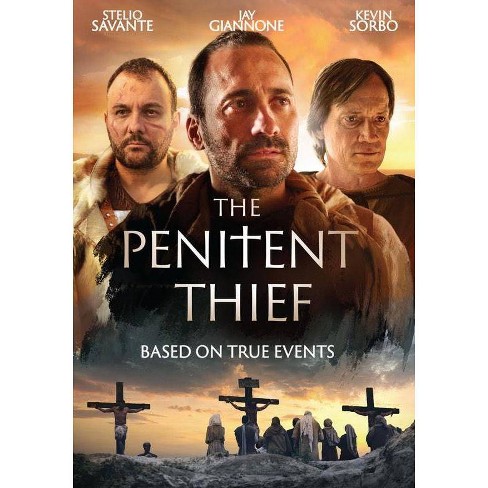
The movie follows the development of the boys, particularly Dismas from just a regular naughty boy to a regular thief through a series of circumstances that introduce other characters that connect with aspects of the biblical narrative, from the birth of Jesus. I was reminded of Dickens’ characters Oliver Twist and Fagin, combined with the modern-day tragedy of the African child soldier in terms of the influence of those who take the role of his absent father on the development of Dismas.
Well-known Christian faith film actor Kevin Sorbo (also known from the series Hercules: The Legendary Journeys) has a role as King Herod, and for me illustrated his potential as a Shakespearean actor, adding more to this character than the basic person that Herod was.
There are some usual inaccuracies with the arrival of the Magi, and the context of the killing of the male children, but as the introduction explains it is a work of imagination, focussing on being faithful to Jesus as the Messiah.
The Penitent Thief will provoke thought and more consideration of this side-character who is also one of the most captivating figures in the biblical record. A strength of the film is in the localised settings. These provide a helpful picture of the simple and ordinary nature of living in biblical times. While not as dramatic as The Passion of the Christ, the end scene is sincerely framed in a stylistic fashion that stays with the viewer.
What I liked about this movie was the use of ‘God-incidence’. Interestingly Dickens used this device regularly, though for him it was simply a secular tool for creating connections and keeping the reader journeying as he wrote in serial format. In this film, it is a pointer to the simple truth that we may never know what part we play in God’s plan until the grand end.
Peter Bentley
More Than Money - Christmas Jars (The Movie)
Christmas Jars (2019, PG)
This movie is tailor-made for the contemporary idea of Christmas with a focus on kindness and giving. It is not meant to be a traditional faith-based film, though there is an acknowledgement of prayer and faith. It could be described as a movie in the tradition of the Prayer of Saint Francis of Assisi. It is based on the 2005 novel by Jason Wright. Wright also co-wrote the screenplay. Over the last decade in the USA, the Christmas Jar concept has taken on a life of its own. The idea is that throughout the year, you put your change, (or notes) into a large glass jar and then at Christmas time provide to a person in need (usually anonymously). 
While the jars contain money, that is interestingly not the focus. The story follows Hope Jensen, a young reporter working at an online website, who receives a Christmas Jar following a difficult time. After learning about other people receiving these jars, she makes it her mission to find out how it all began.
Christmas Jars is a combination of a Dickens-type story, with the usual emphasis on coincidence and a Hallmark Christmas card. The publicity itself highlights the cute, warm context and the encouragement one can receive from a message of hope.
While it certainly is a little twee in parts, there are some excellent scenes where the real issues come to the fore and the strength of the acting is often shown. The movie also considers in a helpful way the ethics of undercover journalism, illustrating the power of forgiveness. If you want an alternate to the dark side of much film and TV today, Christmas Jars is for you. For screenings see the website.
Peter Bentley
Christian Today Film Reviews
Peter Bentley's reviews on Press Service International
Don't Even Think That People are Just Seeking Attention (First published 6 November 2020)
Review of The Girl on the Bridge (2020)
Two Hollywood 'Christian' Movies (First published 3 December 2020)
Review of Same Kind of Different as Me (2018), and Saint Judy (2017).
Same Kind of Different as Me
This warm-hearted film was released online in Australia (due to the changed screening circumstances - see link at end) and will provide encouragement to look at the way people can be changed by common grace. The story is well-known in the USA. A couple befriend Denver (played by Djimon Hounsou), a homeless man, and a growing love and support for each other leads to a foundation that has raised multi-millions of dollars for homeless support. 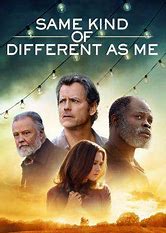
The USA context is striking with the impact of the KKK providing the initial background to the story of Denver’s life and illustrating the history of the South and the issues that had continued since the civil war.
Greg Kinnear is Ron, the unfaithful husband, and film’s narrator, who is given a second chance by his wife Debbie (Renée Zellweger). She does not want him to win her back with presents, but wants him to change, and enlists him to serve in the local homeless mission. Here, while providing help, Ron renews his marriage and life as he connects with the most unlikely person he would have ever thought he would have connected with.
It is no coincidence that the movie night film at the mission is It’s a Wonderful Life.
Christian references abound, though this is not a typical ‘Christian film’, especially with the range of Hollywood actors involved (two Oscar winners as Jon Voight plays Ron’s estranged father). It is certainly a film one could see with family and friends and it will prompt discussion about faith, love and hope.
Peter Bentley
Total Truth: A review
Is religion only a private matter, or does God belong in the public arena?
Total Truth by Nancy Pearcey, in examining this question, follows in the line of, and further develops, Francis Schaeffer’s How Should We Then Live and Charles Colson’s How Now Shall We Live, both of which would be known to many readers.
Subtitled Liberating Christianity from Its Cultural Captivity, Total Truth presents a readable and insightful challenge to evangelical Christians to understand all of society and life through a Christian (biblical) worldview rather than a secular one Christians have adopted. That secular worldview is limited to our culture and binds Christians, who restrict their faith to only the private sphere, leaving it at Church each Sunday.
As our worldview governs our thinking, Pearcey encourages readers to develop and apply a biblical worldview to all of life, arguing that this gives us “a biblically informed perspective on all reality,” – a Total Truth – which enables us to see things more clearly and which we can take into our daily life and the world in which we live, i.e., the public sphere. In this way, Christianity is able to challenge, redeem and renew culture.
Total Truth comprises 4 parts.
Part 1 explains how to build a Christian worldview by starting at the beginning – in the beginning God created the heavens and the earth – and the Bible’s teaching that God is the only source of the whole created order, and seeing all of history through Creation, Fall, and Redemption.
From here Part 2 examines Creation and science;
Part 3 the decline of Christian thought over the ages;
and Part 4 how to apply a Christian worldview, and integrate our faith, in all of life and daily living under the Lordship of Christ.
Pearcey shows what this Total Truth means for areas of family, business, public policy, education, arts, science, music, law, politics and Christian involvement in society. She “walk(s) you through practical, workable steps for crafting a Christian worldview in your own life and work” and applying it “to cut through the bewildering maze of ideas and ideologies we encounter in a postmodern world. The purpose …. is nothing less than to liberate Christianity from its cultural captivity, unleashing its power to transform the world.”
She believes:
“The most effective work …. is done by ordinary Christians fulfilling God’s calling to reform culture within their local spheres of influence – their families, churches, schools, neighbourhoods, workplaces, …. and civic institutions.”
Although written in 2004, Total Truth is a book highly relevant today. The foundation and explanations laid down by Pearcey are most helpful for Christians in the present day in understanding that God belongs in the public arena and in their responding to the push to exclude the Christian faith from the public square.
There is also a study guide edition to Total Truth available – which would be a practical way of reading the book and understanding its message.
Owen Davis is an active ACC member in South Australia.
‘Little Women’ - Revisited Today
Little Women (PG, 2018)
This Little Women is the latest film based on the Louisa May Alcott novel. Though made and released in the USA in 2018 to recognise the 150th anniversary of the novel, this film is now having a commercial release in Australia in early September 2019 (and before the launch of a re-made traditional version). What makes this version distinct is that it has a modern setting and the four sisters are all women of the 21st century. The key question is still there though - what do you want to do in your life?
Marriage is still the context, rather than a relationship, and in a way today this consideration of faithful male - female marriage is a counter-cultural approach to the individualistic trend of looking to your own fulfilment. 
There are some whimsical moments, including a really lovely cat, and aspects that will resonate with people in Australia, even though it is an American setting. Cracked phone screens are as much a symbol of this age as communication through text. The role of fantasy and fable are brought into a modern setting though without the usual focus on horror or desecration. I liked the references and context of books and reading and particularly the consideration that modern reading should still be in a printed book format because of the different dynamic of personal communication.
It is a helpful and gentle family film in a time when the idea is developing that there is no need to have a family or perhaps even be part of one. In this film there are positive models of women and men. The father is now a military doctor and is often away, and the mother and children all have love and support for him and each other, and together exemplify a faithful bond of unity.
I see this Little Women primarily as a good film for mothers and daughters to see together and talk about - it could lead to deeper conversations about what is really important in this short life we are given by God.
Peter Bentley
Billy Graham: An Extraordinary Journey
Billy Graham: An Extraordinary Journey (2018)
Many readers would have attended the 60th anniversary gatherings held earlier this year (2019) that were arranged by the Billy Graham Association (BGA) in recognition of the impact and long-term ministry of Billy Graham. Soon after Billy Graham’s death (February 21, 2018), the BGA released a documentary to provide an ‘official’ film of Billy Graham’s ministry calling. The documentary is now available via streaming services. 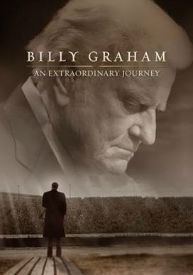
This is a personal journey, and features Billy Graham from his early years and at different and pivotal points of his life and with members of the Graham family.
His wider connections and ability to relate to a wide variety of people is a feature. In the USA and in other places, his regular appearances on radio, and then TV talk shows brought him into contact with many people who would never have attended a crusade. The ecumenical foundation of his crusade gatherings, and his general support for integration are prominent in themes, but of course the central focus is on his calling to preach the gospel.
There has been some debate over the style of the documentary and criticism that it was not a critical or academic documentary, though I think this misses the point as that was not its purpose. It is a relatively short overview (about an hour) and serves the purpose of being a visual eulogy for the countless millions of people that Billy Graham connected with, and clearly could attend the actual funeral. People are invited into the life of Billy Graham and towards the end of the documentary the actual funeral service is featured. I found the documentary to be quite illuminating and humble in its approach, with a focus on giving thanks to God for the life of one person who was called to tell others in this very public way about his lord and saviour Jesus Christ.
(Another interesting film, though not BGA produced is Billy: the early years (2008) - this was reviewed in an early ACCatalyst: March 2009.)
Peter Bentley
The Bible in Australia
by Meredith Lake, Newsouth Publishing, 2018 (pp 439) 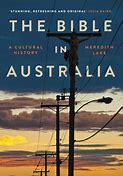
A short explanation of what this book is about is found in the subtitle - A Cultural History.
This book provides a picture of how the bible’s influence and impact has connected with Australian history and culture. It considers how the bible has been used and misused, and perhaps ‘not used’, in the context of the foundation and development of modern Australia. Meredith Lake has created a rare offering - a readable scholarly academic work. There are four parts:
Colonial Foundations
The opening section considers the arrival of the bible in 1788 and initial interactions in the convict era, and the overall immigrant context as the nation develops. Woven throughout the first part and indeed through the whole book are stories, and examples of connection related to Aboriginal and Islander people, especially in relation to translation and hearing the word in their own tongue, and the wider questions about indigenous theology and relationships.
The Great Age of the Bible
This part provides an excellent overview of the incredible stories of missionary endeavour and promulgation of the bible and the beginnings of the consideration of different ways of viewing the bible, its authority and status.
Bible and Nation
The third part looks at the place of the church (and bible) in Australia in the context of a consolidated Australia that was finding its own identity. A revealing chapter is the chapter on WWI and its aftermath. As it has been revealed during these WWI centenary years, the impact of this era has often been underestimated.
The final part A Secular Australia? Explores the place of the bible in the new era, looking at the changes in society and the impact of change on the church and the place of the bible. I noted quotes from people who would be known to ACC readers, including Deane Meatheringham in reference to his conversion at the 1959 Billy Graham Crusade. In this 60th year anniversary of the Crusade, it is illuminating to reflect on the differences in Australia in terms of our cultural history.
The chapter ‘The Bible in the new millennium’ vividly highlights the pace of change, especially in the context of SRE (and certainly the fact that this is now the sole area of contact with the bible for a large group of Australians), and the impact of new technology and how this relates to reading and understanding the bible.
Having highlighted this book’s accessibility and wide-ranging material, I am still going to suggest that an abridged version is needed (not the twitter form), but more an adult pocket version that summarises and yet continues the main themes and ideas. I note that Meredith produced a version of this in 2016, aimed at students and prepared for The Bible Society - The Bible Down Under.
I found the last few pages especially fascinating and helpful as they raise the context for a wider discussion. These pages form a very interesting conclusion in the context of ethics and decision-making. It is a question I have long been asking - how do people make decisions today when for many there is no association with a book like The Bible?
The conclusion takes one back to earlier discussions and ongoing themes in the book about the cultural impact of the church and its role in providing for the common good in society. This enables one to understand, consider and discuss in hopefully a helpful way the continuing role of the bible today.
Peter Bentley
The Way Back
How Christians Blew Our Credibility and How We Get It Back (pp 251) 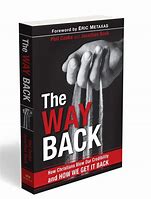
by Phil Cooke and Jonathan Bock
Be careful to live properly among your unbelieving neighbours. Then even if they accuse you of doing wrong, they will see your honourable behaviour, and they will give honour to God when he judges the world. 1 Peter 2:12 (NLT)
First, I need to highlight that this is a book that looks at how the church and Christians relate to society and not the issues and nature facing the church internally. The context is evangelical faith in the USA, so the context for the reflection is how that evangelical community essentially blew it by becoming too associated with politics and the culture wars. It is not an apologia for liberal Christianity and a call to adopt the culture of the day. It is a simple challenge for Christians to become more the people of ‘the way’.
The two authors have both been involved in a wider media and communication ministry and network and are well placed to report on the perceptions of society and change in how Christians and the church are viewed and provide pointed reflections on where we are and what to do.
Phil Cooke will be known to a number of readers as he has spoken in Australia and was a lead interviewee on the Andrew Denton documentary God on Our Side (this looked at evangelicals and their support for George W Bush in the context of the US National Religious Broadcasters Convention in 2006). Phil’s blog (search philcooke.com) provides short reflections and practical examples and ideas to encourage people to re-think their way of doing things.
Of greatest help though in this book is the focus on our personal Christian lives and a call to renew our Christian walk. As we become more people of the way our hope is that people will see the way themselves.
Peter Bentley

